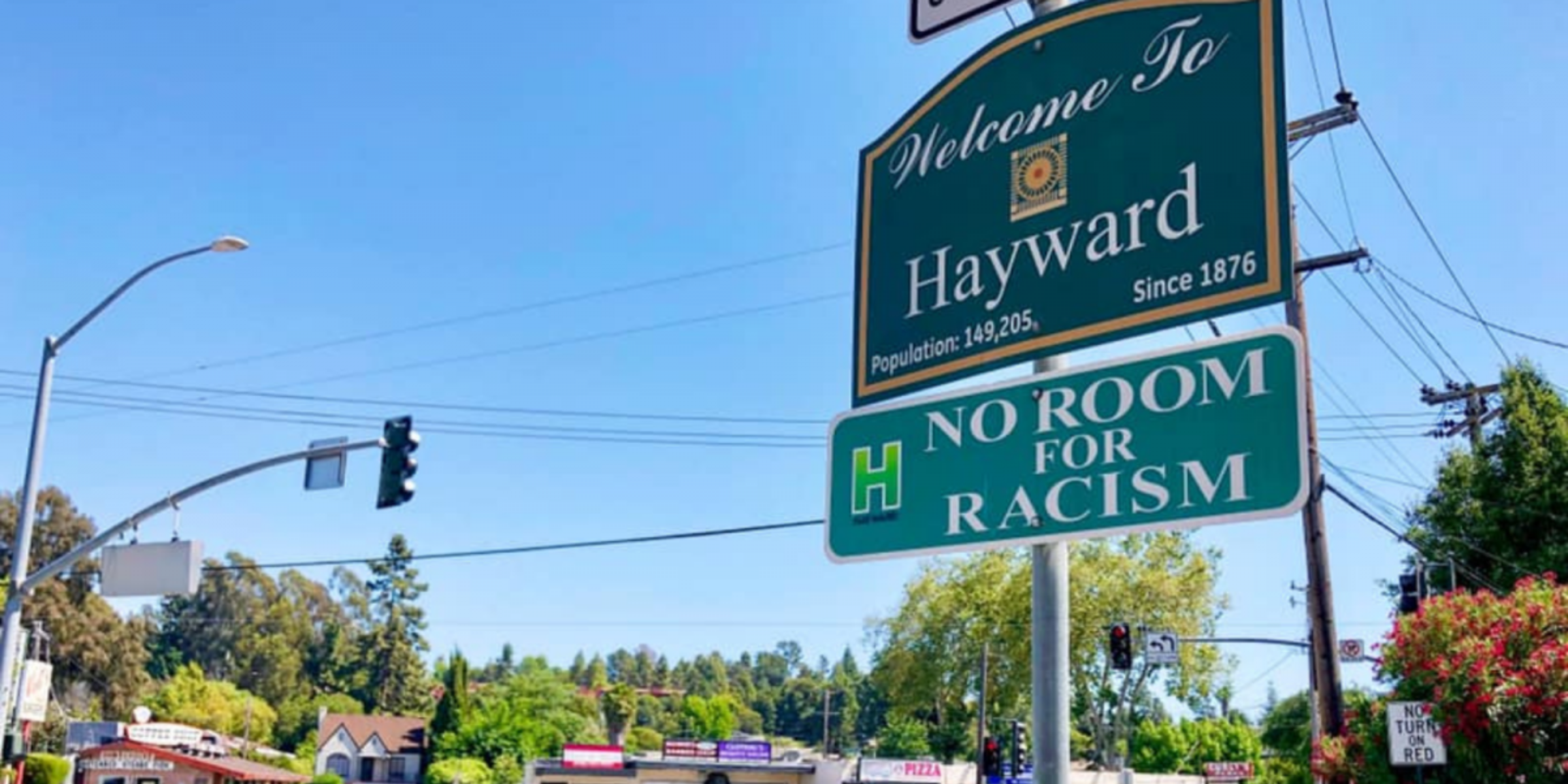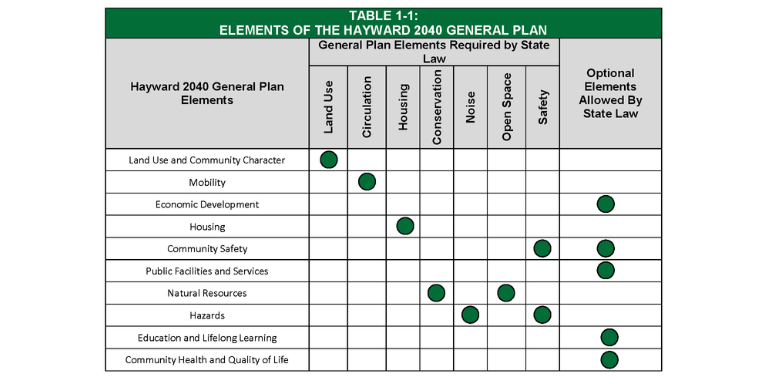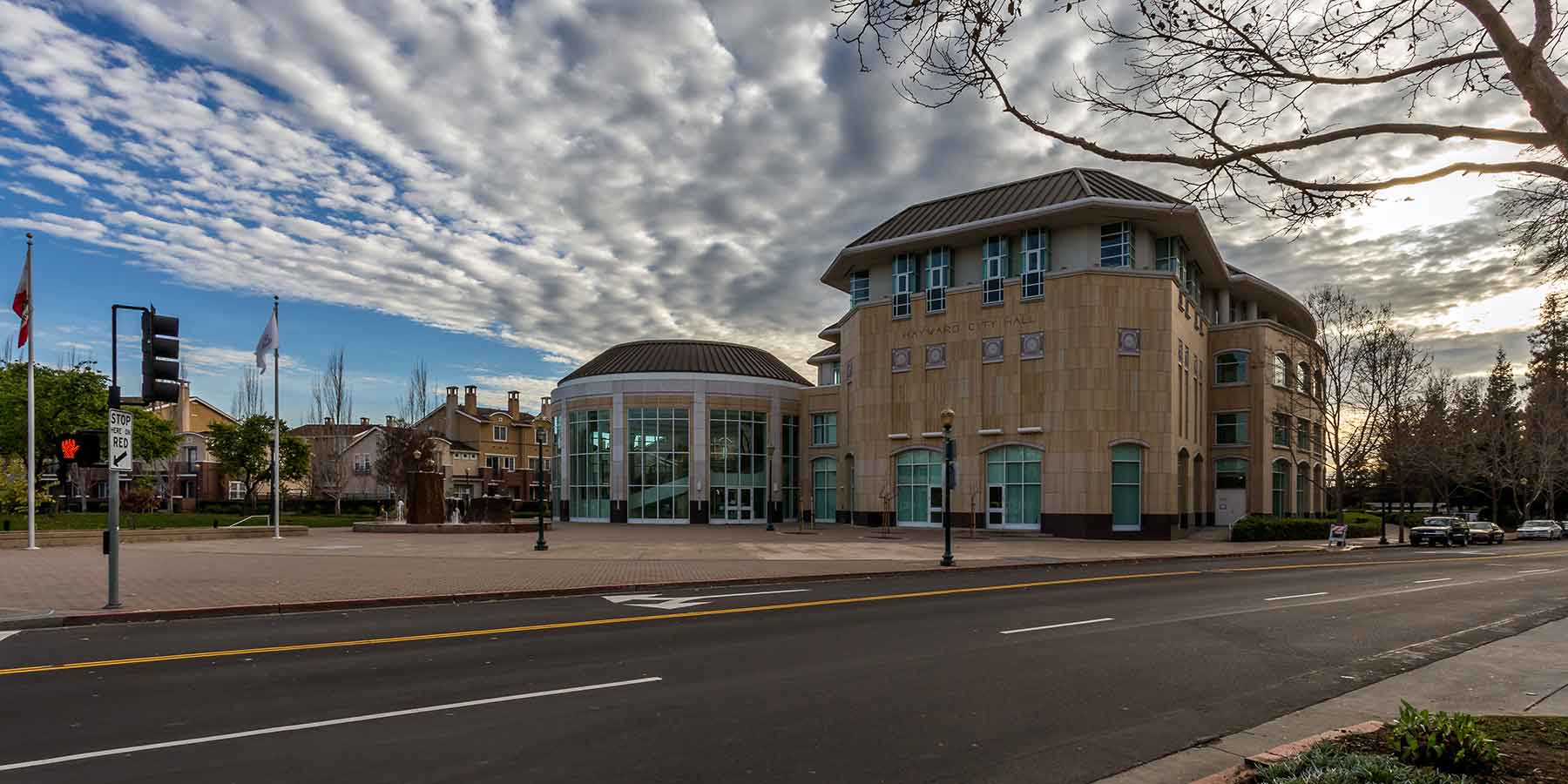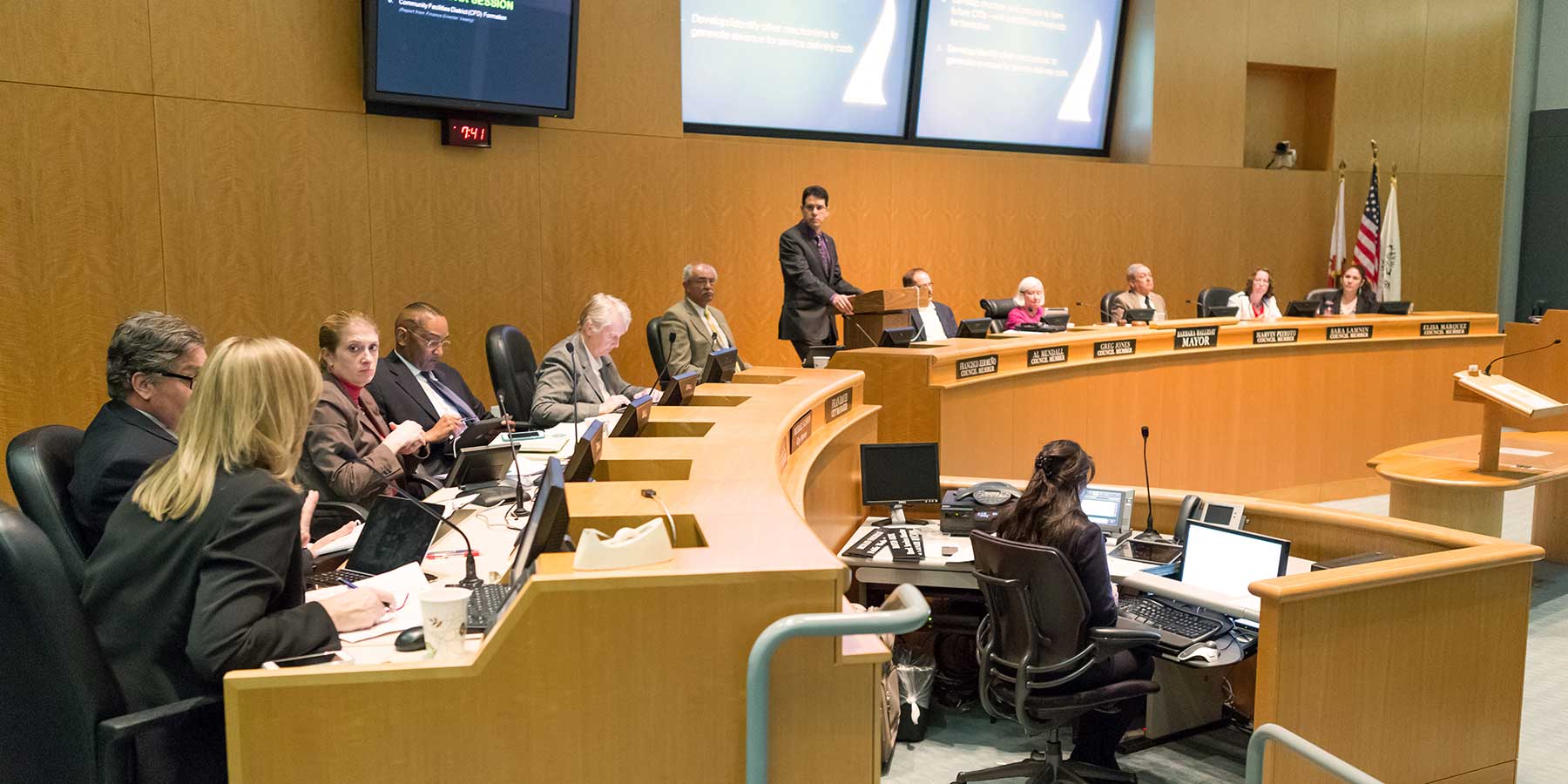General Plan Overview

What is the Hayward 2040 General Plan?
The Hayward 2040 General Plan establishes a community-based vision for the future of Hayward, and establishes goals, policies and implementation programs to help the City and greater Hayward community achieve that vision. The General Plan is the City’s overarching planning document and provides a blueprint for growth and development by setting land use policy citywide. The General Plan consists of two documents: the Background Report and the Policy Document. The Background Report provides a comprehensive overview of the existing setting (2012) of the Hayward community. The Policy Document contains the goals, policies, and implementation programs that will guide future growth and development within the City of Hayward.
State law requires general plans to address seven mandatory topics or “elements”. The seven mandatory elements are land use, circulation, housing, open space, conservation, safety, and noise (California Government Code Section 65302). A general plan may also include other elements that address various challenges and opportunities that are unique to the jurisdiction (California Government Code Section 65303). Under State law, if optional elements are included in the general plan, they carry the same weight of law as those that are legally mandated.
The Hayward 2040 General Plan addresses the seven mandatory elements and includes several optional elements. Table 1-1 lists the elements of the Hayward 2040 General Plan and shows how the elements are organized to meet the mandatory requirements of State law.

The Hayward 2040 General Plan also functions as a climate action plan and community risk reduction plan. A climate action plan is a comprehensive strategy to reduce greenhouse gas emissions. Hayward prepared and adopted a Climate Action Plan in 2009. As part of the General Plan update process, the City re-evaluated the greenhouse gas reduction estimates assigned to individual actions contained in the adopted Climate Action Plan. The analysis resulted in the development of new and modified actions. The 2040 General Plan integrates the new and modified actions within its overall policy framework. This integrated approach allows the 2040 General Plan to be recognized as a “Plan for the Reduction of Greenhouse Gas Emissions” (as allowed for in section 15183.5 of the California Environmental Quality Act Guidelines) and as a “Qualified Greenhouse Gas Reduction Strategy” by the Bay Area Air Quality Management District. As a result, the elements of what would otherwise be a “stand-alone” climate action plan have been incorporated into the Hayward 2040 General Plan.
A community risk reduction plan is a comprehensive strategy to minimize community health risks associated with toxic air contaminants (TACs) and fine particulate matter () in both existing and new development. Similar to the Climate Action Plan integration, the 2040 General Plan integrates the typical elements of a community risk reduction plan into the policy framework of the General Plan. The policy framework includes specific long-term goals, policies, and implementation programs to reduce communitywide exposure to TACs and . This integrated approach allows the City to incorporate the analysis and components of a “stand-alone” community risk reduction plan into appropriate section of the General Plan.
The Hayward 2040 General Plan includes an integrated Climate Action Plan and Community Risk Reduction Plan.
Climate Action Plan
The General Plan contains policies and implementation programs that serve as actions to reduce greenhouse gas emissions. These policies and programs are identified with a special symbol:
The overall objectives of these policies and implementation programs are to reduce Hayward’s greenhouse gas emissions by:
- 20 percent below 2005 baseline levels by 2020,
- 62.7 percent below 2005 baseline levels by 2040, and
- 82.5 percent below 2005 baseline levels by 2050.








